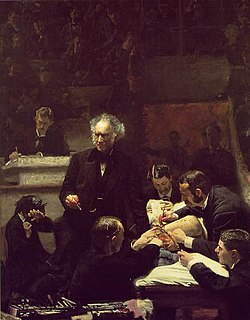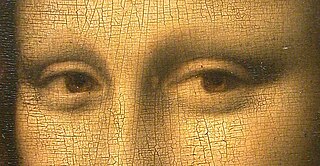 W
WThe conservation and restoration of paintings is carried out by professional painting conservators. Paintings cover a wide range of various mediums, materials, and their supports. Painting types include fine art to decorative and functional objects spanning from acrylics, frescoes, and oil paint on various surfaces, egg tempera on panels and canvas, lacquer painting, water color and more. Knowing the materials of any given painting and its support allows for the proper restoration and conservation practices. All components of a painting will react to its environment differently, and impact the artwork as a whole. These material components along with collections care will determine the longevity of a painting. The first steps to conservation and restoration is preventive conservation followed by active restoration with the artist's intent in mind.
 W
WThe conservation and restoration of Tibetan thangkas is the physical preservation of the traditional religious Tibetan painting form known as a thangka. When applied to thangkas of significant cultural heritage, this activity is generally undertaken by a conservator-restorer.
 W
WThe conservation-restoration of Leonardo da Vinci's The Last Supper is an ongoing project that has spanned many centuries. Completed in the late 15th century by the Renaissance artist Leonardo da Vinci, the mural is located in the refectory of the Convent of Santa Maria delle Grazie, Milan, Italy. The Last Supper was commissioned by Ludovico Sforza, Duke of Milan in 1495, as part of a series of renovations to the convent with the intention that the location would become the Sforza family mausoleum. Work began on The Last Supper in 1495 and lasted until 1498. The scene is understood to depict the Bible verse John 13:22, showing the reactions of the Twelve Disciples, at the Last Supper, in the moments following Jesus’s announcement that one among them will betray him.
 W
WThe conservation-restoration of Thomas Eakins' The Gross Clinic refers to the on-going conservation-restoration treatments of American painter Thomas Eakins' 1875 painting The Gross Clinic throughout the 20th and 21st centuries. These treatments are a testament to the changing methodologies undertaken in the field of paintings conservation.
 W
WCradling is a process used in the restoration and preservation of paintings on wooden panel. It consists in mounting a grid of wooden slats to the back of a painting to create a reinforcement and preserve the flat paint surface.
 W
WCraquelure is a fine pattern of dense cracking formed on the surface of materials. It can be a result of drying, aging, intentional patterning, or a combination of all three. The term is most often used to refer to tempera or oil paintings, but it can also develop in old ivory carvings or painted miniatures on an ivory backing. Recently, analysis of craquelure has been proposed as a way to authenticate art.
 W
WMassimo Stanzione's David with the Head of Goliath is exhibited at the San Diego Museum of Art.
 W
WThe Ecce Homo in the Sanctuary of Mercy church in Borja, Spain, is a fresco painted circa 1930 by the Spanish painter Elías García Martínez depicting Jesus crowned with thorns. Both the subject and style are typical of traditional Catholic art.
 W
WThe conservation and restoration of painting frames is the process through which picture frames are preserved. Frame conservation and restoration includes general cleaning of the frame, as well as in depth processes such as replacing damaged ornamentation, gilding, and toning.
 W
WThe conservation and restoration of frescoes is the process of caring for and maintaining frescos, and includes documentation, examination, research, and treatment to insure their long-term viability, when desired.
 W
WMineral painting or Keim's process, also known as stereochromy, is a mural or fresco painting technique that uses a water glass-based paint to maximize the lifetime of the finished work.
 W
WFrancisco Martínez Yago was a Spanish painter; father of Salvador Martínez Cubells.
 W
WMineral painting or Keim's process, also known as stereochromy, is a mural or fresco painting technique that uses a water glass-based paint to maximize the lifetime of the finished work.
 W
WOliver Brothers Fine Art Restoration and Conservation is believed to be the first art restoration establishment in the United States. For more than one and one-half centuries, the Olivers and their successors have restored and conserved antique and contemporary paintings, original works on paper, fine art prints, icons, murals, original photographs, documents, sculpture, gilded objects, and picture frames for private collectors, museums, art dealers, auction houses, galleries, corporations, universities, historical societies, libraries, and others.
 W
WOverpainting can mean the final layers of paint, over some type of underpainting, in a system of working in layers. It can also mean later paint added by restorers, or an artist or dealer wishing to "improve" or update an old image—a very common practice in the past. The underpainting gives a context in which the paint-strokes of the overpainting become more resonant and powerful. When properly done, overpainting does not need to completely obscure the underpainting. It is precisely the interaction of the two that gives the most interesting effects.
 W
WThe conservation-restoration of the frescoes of the Sistine Chapel was one of the most significant conservation-restorations of the 20th century.
 W
WThe practice of conserving an unstable painting on panel by transferring it from its original decayed, worm-eaten, cracked, or distorted wood support to canvas or a new panel has been practised since the 18th century. It has now been largely superseded by improved methods of wood conservation.